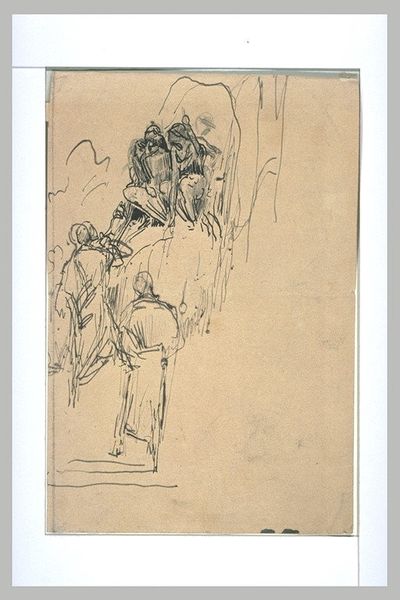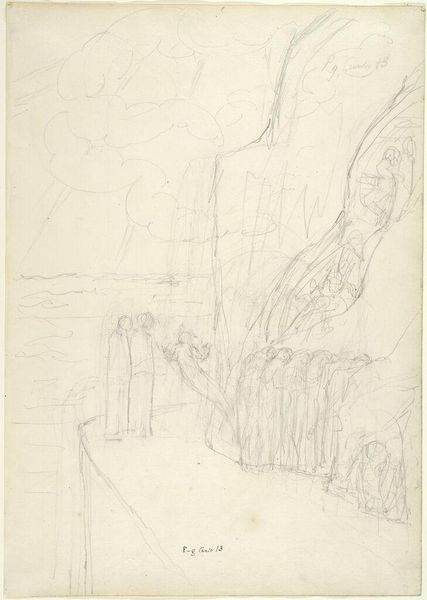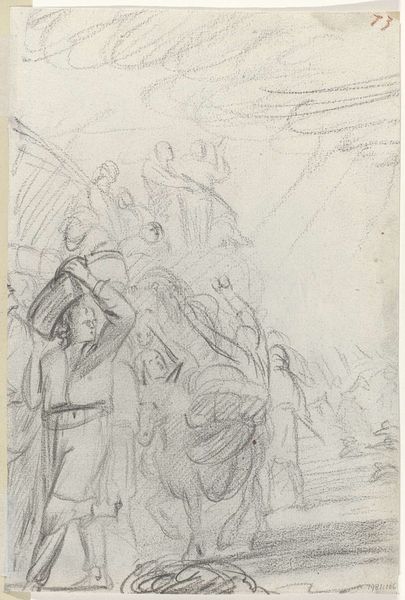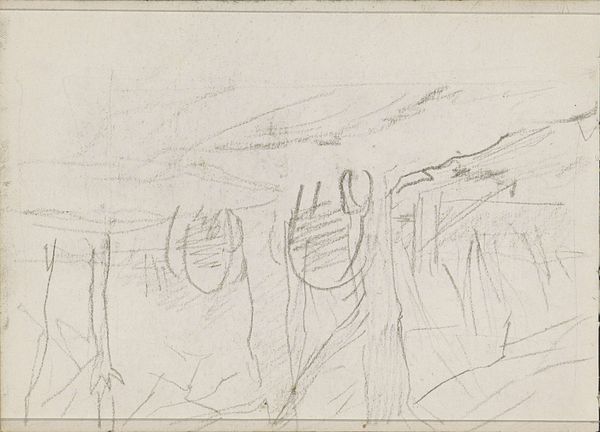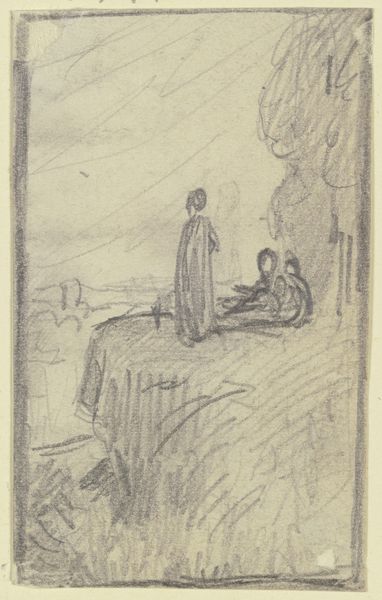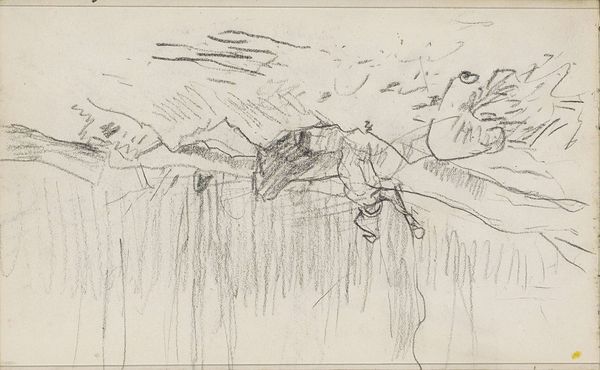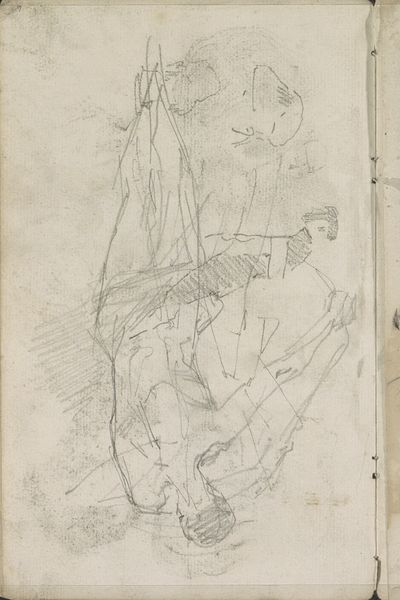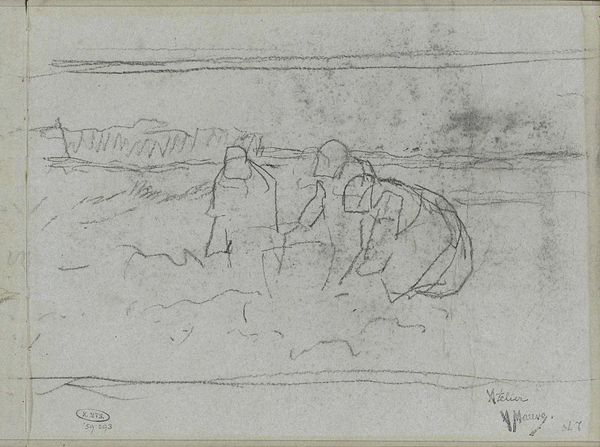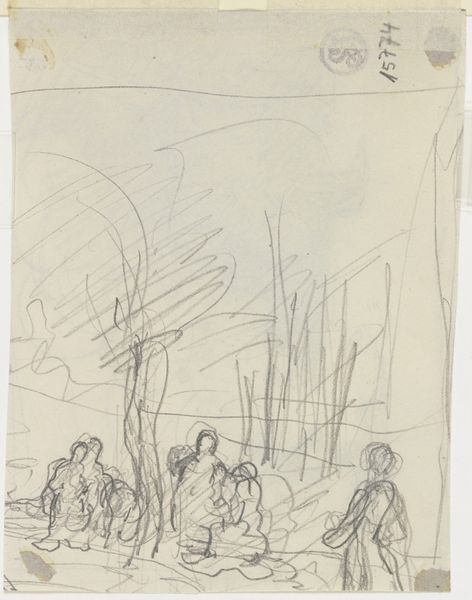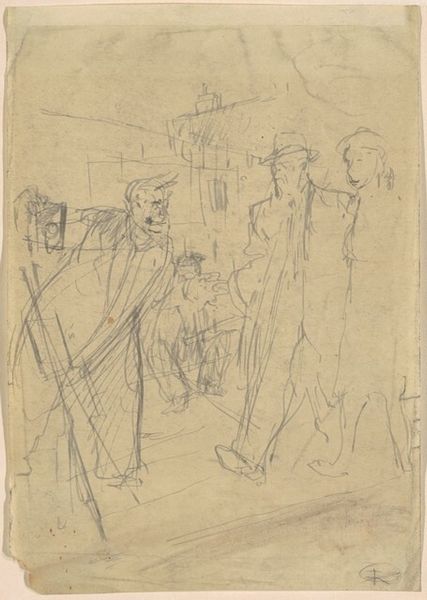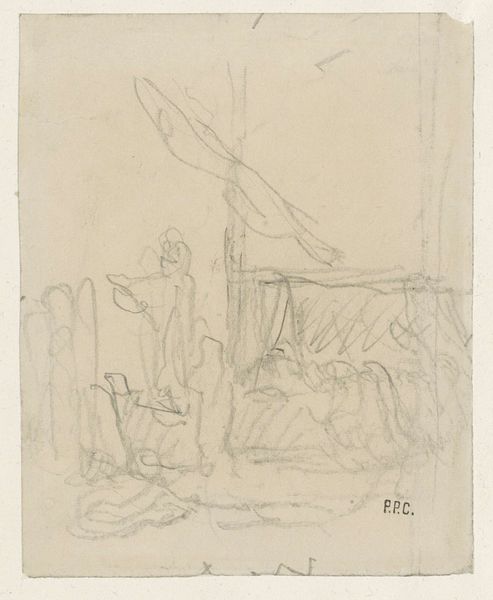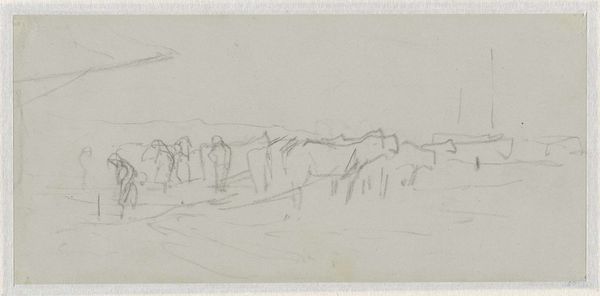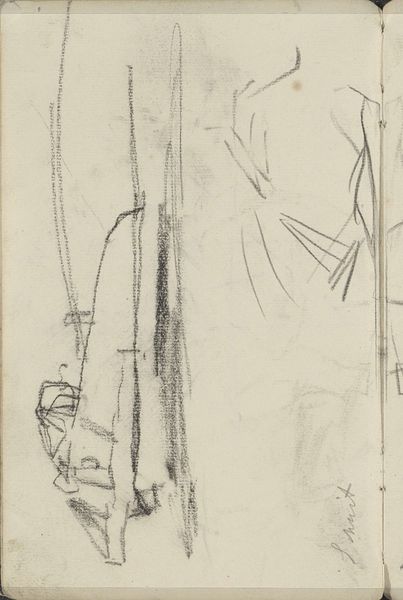
drawing, pencil
#
drawing
#
landscape
#
figuration
#
pencil
Copyright: Public domain
Editor: This pencil drawing is called "Projet d'illustration pour Macbeth-6" by Luc-Olivier Merson. The date is unknown. There's a strong feeling of desperation in it; figures are kneeling, arms raised, and the knight looming above looks rather ominous. What kind of historical context informs our reading of this image? Curator: It’s interesting that you pick up on the desperation. The sketch itself points to the play Macbeth, rooted in power struggles and the supernatural in 11th-century Scotland. Merson's loose rendering hints at a ghostly apparition or perhaps an expression of guilt, common motifs within this specific Shakespearean drama. Editor: So, it's not just about the individuals depicted, but what they represent in the story and wider political framework? Curator: Exactly. The socio-political is heavily coded within the drama. Kneeling figures suggesting supplication, figures riding atop the land connoting the elite and the noble class: are they imploring the apparition for aid, or attempting to change what the apparitions portend? Where was this drawing intended to be circulated? For whom? These contextual components speak volumes, don’t they? Editor: Absolutely. The act of illustrating a play is, itself, a commentary. I wonder about the decisions made for wider consumption: for whom? I had only considered what the composition did at face value and didn't see how heavily cultural power plays into even initial readings of form and medium. Thanks! Curator: You're welcome! Thinking about these initial factors expands the artwork's purpose from visual to socio-political commentary. It enriches the way that the museum itself may consider artworks.
Comments
No comments
Be the first to comment and join the conversation on the ultimate creative platform.
